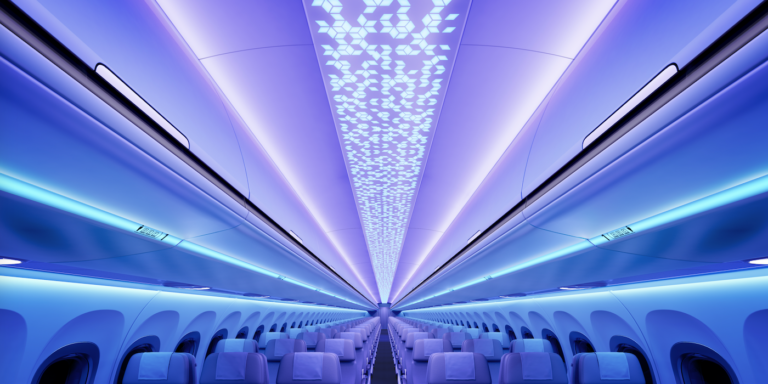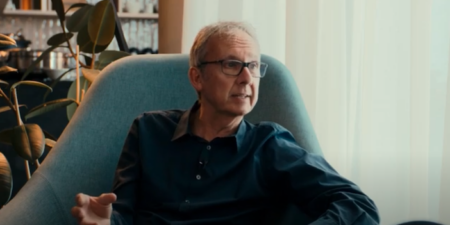Aircraft Interiors Expo 2020 would have introduced many innovative ideas, designs and space-efficient hardware to enhance the aircraft cabin environment. Let’s take a look at some of these great ideas from the comfort of our own homes…
Digital end-to-end services
The increasing complexity and shortening lifecycles of cabin products require new types of engineering solutions that can manage higher speed, volume and complexity. Indeed there could be new demands of cabin design in the post-Covid-19 world, which could increase demand. Digitalisation is already helping many engineering disciplines improve product performances and reduce costs and time to market. However, many companies experience operational ‘pain points’ within their digitalisation initiatives for development and production phases, and so have not defined a full digital transformation strategy for their value chain.
Engineering and R&D services company, Altran, is offering a new way to innovate, with a digital end-to-end product development lifecycle that combines all relevant data from digital functional models, the digital mock-up and digital twin, and in-service data into one single aircraft cabin data model to provide the digital operational value at any stage of the product lifecycle.
Various technologies such as 5G, IoT and robotics, as well as tools and methods such as MBSE and Big Data, can be applied to be fully flexible for implementing changes and innovations in all phases.
XL Bin for the A320 Airspace cabin
FACC has developed a new ‘Airspace XL Bin’ for the Airbus A320 Airspace cabin, claimed to be the biggest overhead stowage compartment in the short and medium-haul aircraft segment. FACC developed the XL Bins in close cooperation with Airbus, with the newly designed overhead stowage compartment offering space for eight items of baggage instead of the previous five, with a total weight capacity of 96kg, while the unit itself only weighs 26kg – the result of substantial engineering efforts.
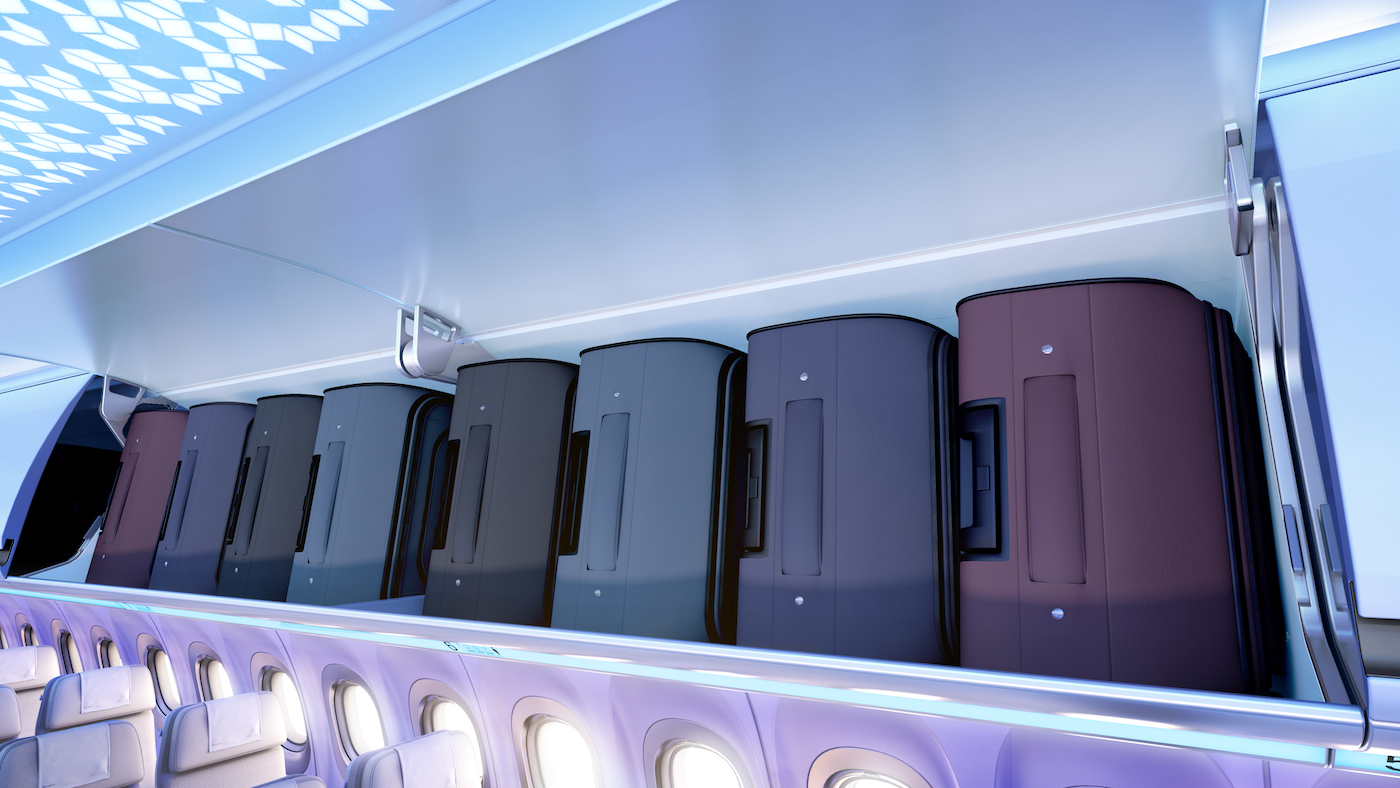
Space-efficient galley system
AIM Altitude would have unveiled two new projects at AIX 2020: an innovative galley system and a flexible destination space, both designed to make flights more comfortable, especially in long haul.
Arca is a galley system based on trending meal-service innovations within the industry. The design makes use of a new meal-pack system, which reduces the galley space required and enables a rethinking of galley carts, fundamentally removing the design limitations of galleys. The space-efficient design of Arca gives airlines the possibility of adding an extra row of seating or destination monuments in the space gained.
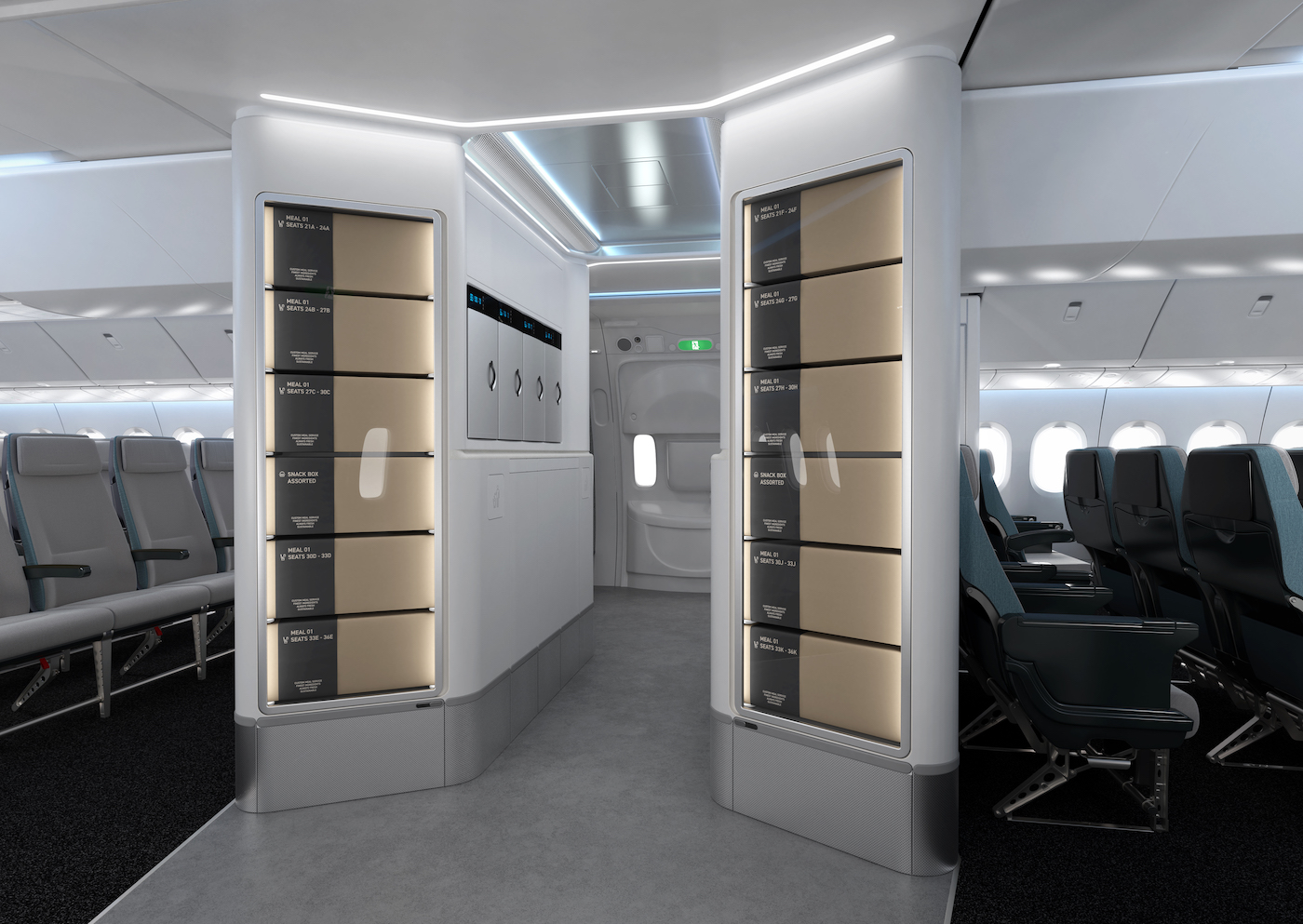
Wellness monuments
The Ultraflex concept monument configuration revealed by AIM Altitude at AIX 2019 was a real talking point, offering areas for exercise, viewing sports and private dining. For 2020, the design has been reimagined and reinvented to create ReFlex, a configuration designed for the Door 2 entrance to wide-bodied aircraft.
AIM Altitude describes ReFlex as a “credible product offering” and it builds on the themes of wellness, with areas designed to combat the adverse effects of long-haul flights. Multi-use units provide flexibility for airlines, allowing them to offer creative welcoming spaces, healthy food and drink service options, and areas for group or individual activities.

Meet Sophy
Sophy is a smart trolley system designed to control and optimise catering operations, offering more than just tracking trolley status and performance. Developed by Safran Cabin, Sophy provides airlines with a ‘helicopter view’ of day-to-day operations, offering insights on main processes and the main parts of a trolley’s journey, including handovers, cleaning, maintenance, in-flight service rounds and more.
The slimline Sophy device is fitted within a trolley, where it can collect, share and communicate real-time, accurate data with other Sophy-activated equipment through a ‘mesh network’, providing insights for airline operators.
According to Safran Cabin, a trolley equipped with Sophy can save catering costs by preventing and minimising inefficiencies caused by mishandling, misplacement or misinformation, and remove the risk of a trolley being left behind during a turnaround or at a catering facility.
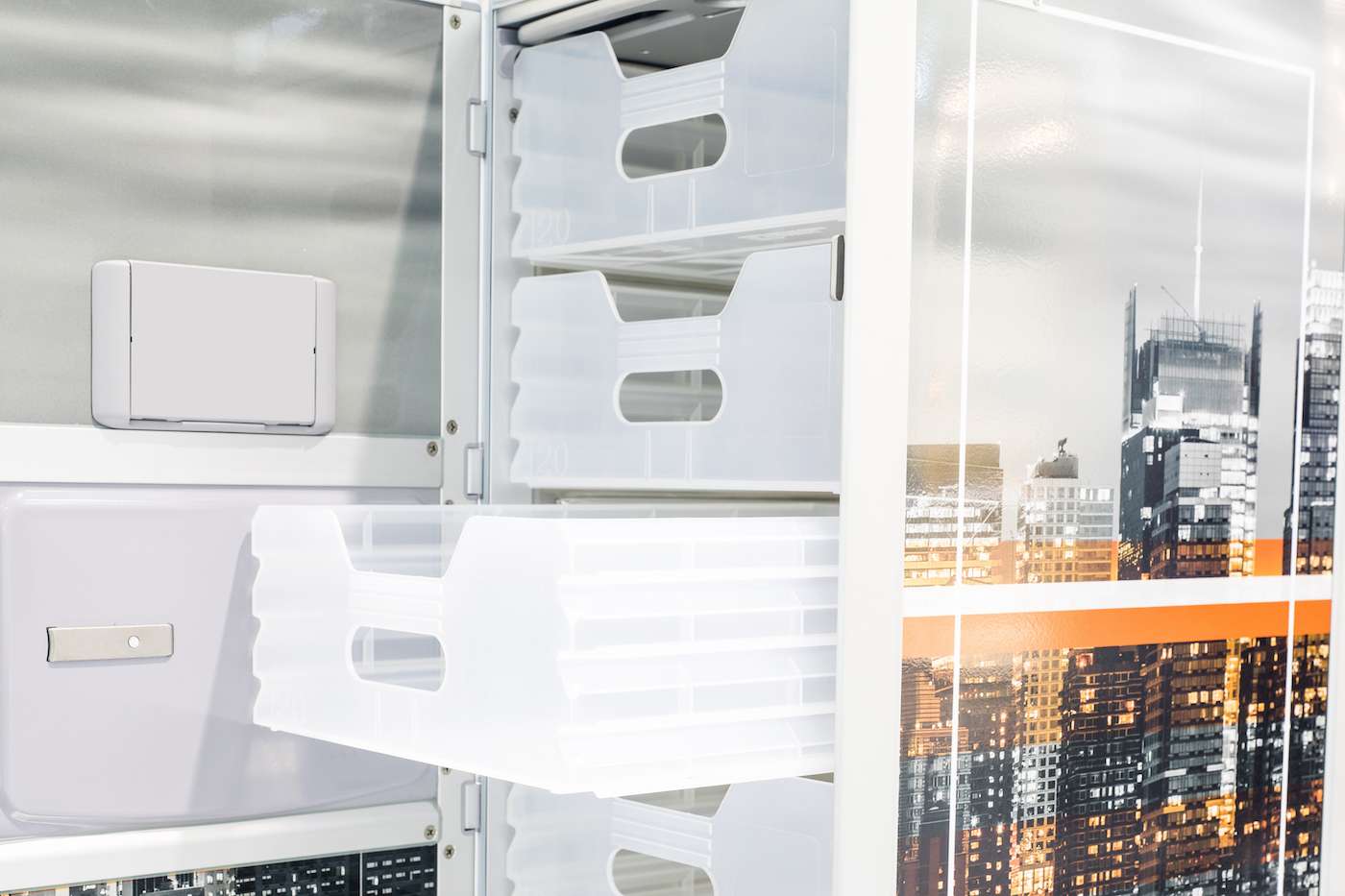
Safran Cabin performed catering and on board research for more than five years prior to the creation of Sophy, and partnered with Undagrid, an Internet of Things (IoT) specialist, to develop the backbone of Sophy’s smart technology. This IoT development enables Sophy-equipped trolleys to have connectivity with Safran Cabin’s Smart Galley, portable devices, and other systems throughout the catering process. More than 20 airlines have also provided input onto the development process and the product is now ready to launch into market.
Multiple galley innovations
Aircraft interiors specialist, Bucher has developed a partition wall with a dimmable window, which can be installed between a galley area and the passenger cabin. The electrically switchable glass in the wall is an elegant alternative to mechanical flaps or curtains and will enable cabin crew to meet direct view requirements at the touch of a button during key stages of flight such as take-off and landing, while protecting crew and passenger privacy at other times.
Bucher has also created a range of enhancements to its ArctiCart inflight trolley for chilled meals. These enhancements include optimising its capacity to feature up to seven standard-sized drawers, and creating a robust frame to give the trolley maximum strength and resistance.
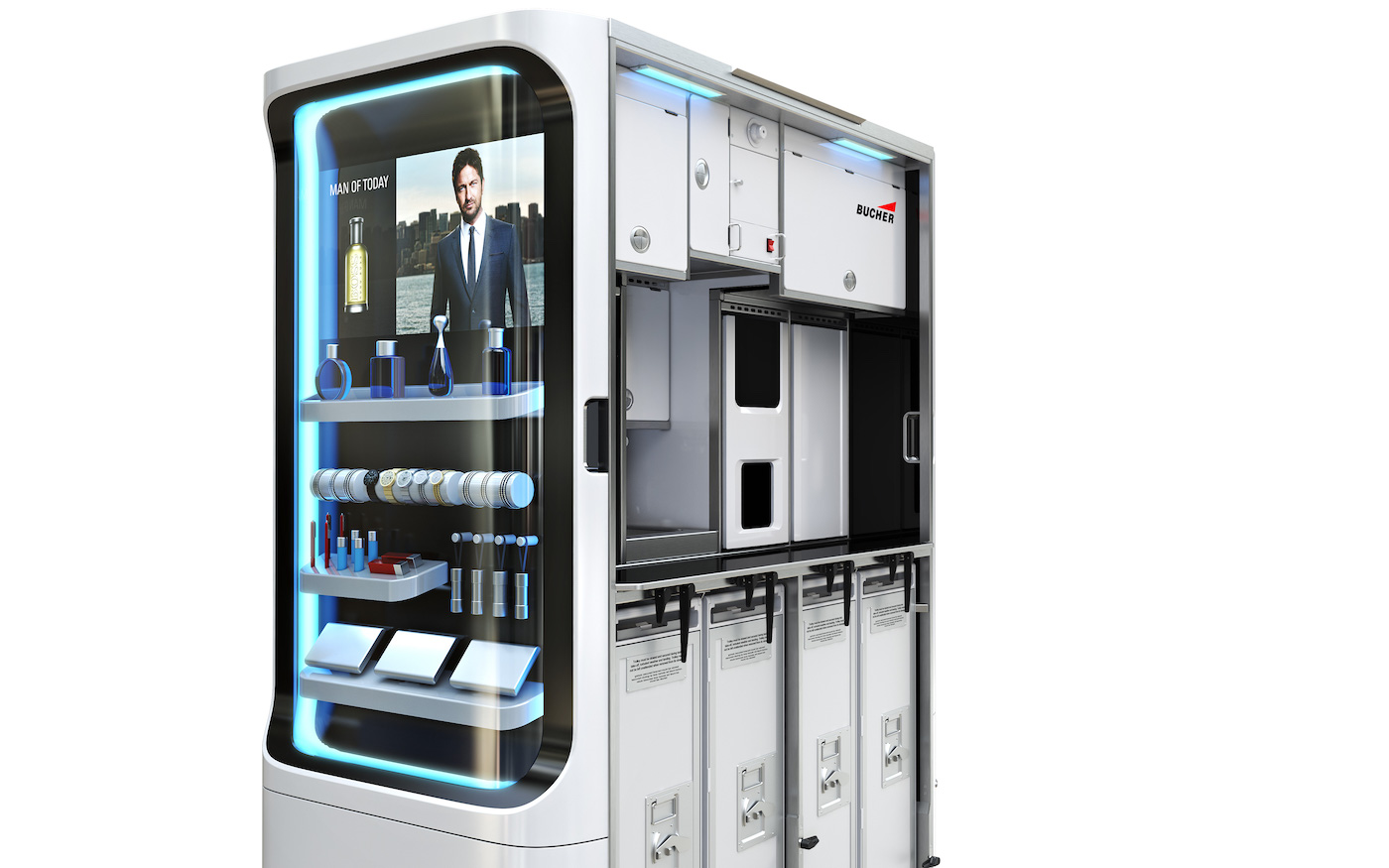
Working together with SkyTender Solutions, Bucher has also developed a world first: a trolley with charging capability for a coffee machine. This technology will enable the trolley to be charged when docked in the galley, which then provides power to a coffee machine, ensuring that coffee is kept hot throughout cabin service.
As part of its Innovation Galley, Bucher has designed a new generation of changeable work table inlays, and a lighting system designed to help guide passengers when they are passing the galley to go to the toilet. These new products are designed to be easily installed by MRO providers as part of an aircraft retrofit.
Coffee? Tea? 16g!
When a cabin attendant seat (CAS) is installed on a partition wall, that wall has to be subjected to 16g dynamic qualification tests – a major engineering challenge. EFW has developed a partition for Airbus’s SpaceFlex rear galley and lavatory configuration, which has successfully withstood these enormous forces and gained qualification, and indeed has now been installed in the A320 with 35 airlines.
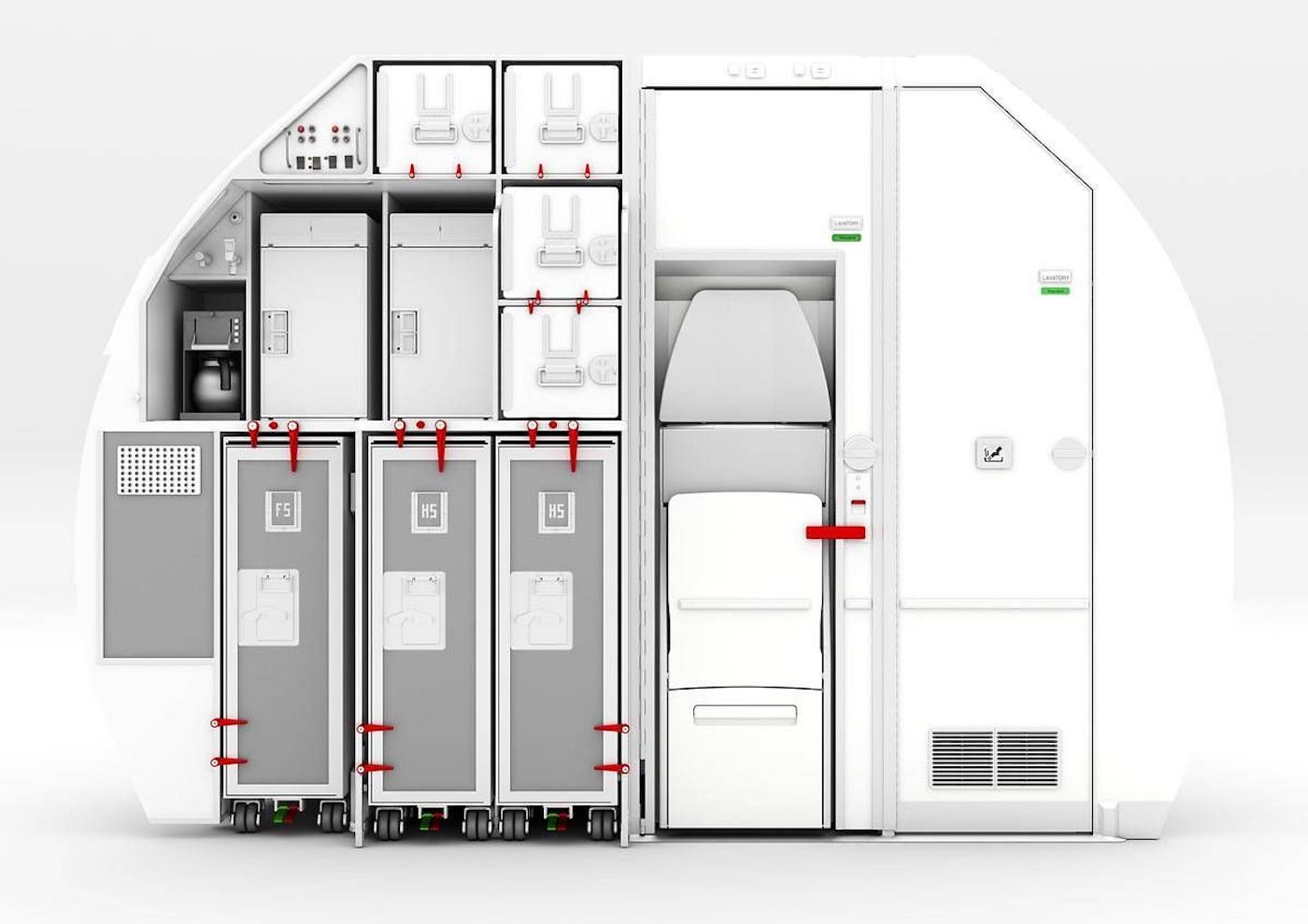
Five-abreast single-aisles
HAECO Cabin Solutions has created a new Premium seat in a configuration designed to add up to 25% additional passenger count in the same footprint. The key is HAECO’s single-aisle five-abreast Eclipse cabin, an all-new approach to narrow-body, long-haul business class configurations. The cabin features a staggered, offset seating design, which can enhance privacy and comfort while maximising cabin density.
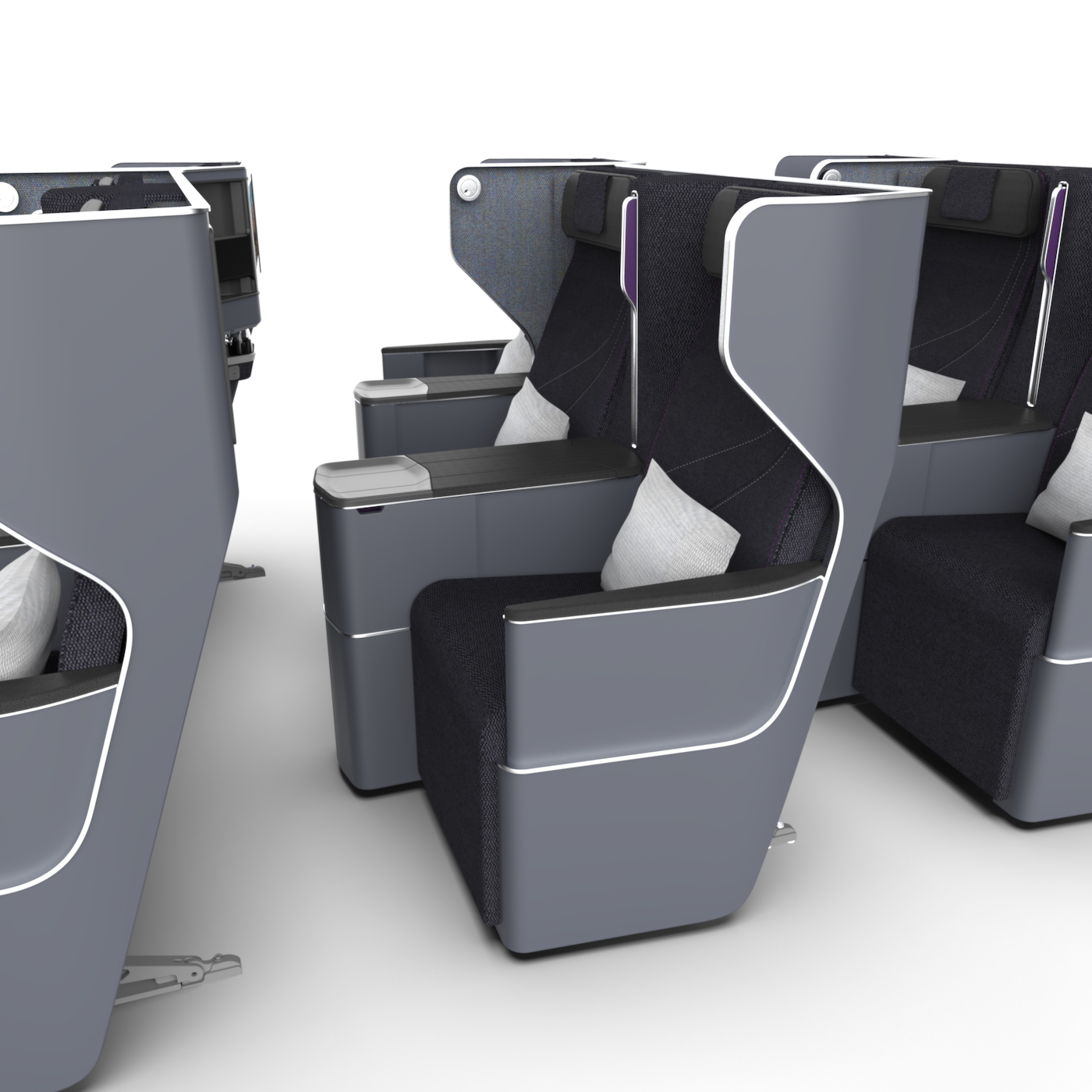
HAECO has also developed complementary Eclipse monuments and stowage solutions that promise to further optimise the cabin.
Dimmable windows for Airbus
Passengers who have enjoyed dimmable windows on Boeing airplanes can now also enjoy the experience on Airbus aircraft, as the latest generation of Gentex Corporation’s electronically dimmable windows (EDWs) are now being offered by Airbus. These electrochromic windows allow passengers to alter the darkness of the aircraft windows while still enabling them to view the scenery outside.
Gentex EDWs feature high-speed transition between clear and dark, and a new ultra-dark low-end transmission. Compared to previous designs, the latest EDWs darken twice as fast and become 100 times darker, effectively eliminating more than 99.999% of visible light, according to the company.
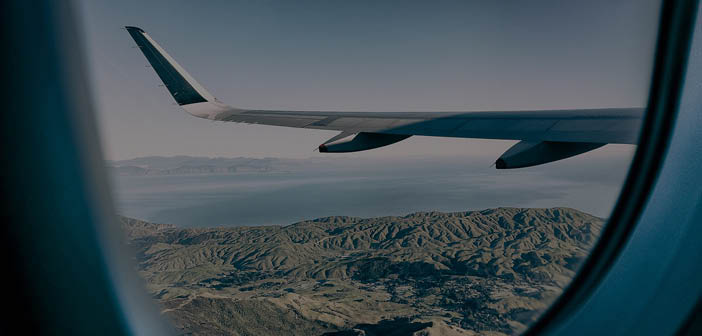
The Airbus EDWs were uniquely designed to be a single line-replaceable unit in order to make installation and maintenance easier. They also feature a longer-lasting, scratch-resistant dust cover.
“We worked together with Airbus to integrate the latest dimmable windows technology while further enhancing it with an additional speciality coating,” explains Gentex president and CEO, Steve Downing. “The windows benefit aircraft operators and passengers alike, which ultimately enhances the user experience for everyone on board.”
Smart windows and more
Solar protection systems expert, Vision Systems has engineered three SPD (suspended particle device) dimmable windows with distinctive characteristics adapted to each cabin class. These windows eliminate shades that block the view and require regular maintenance, while protecting passengers from unwanted daylight or glare, and include innovative features such as multizoning, lighting, electroluminescent touch control and information displays.

Vision Systems has also created a smart partition that can display videos. This divider can remain transparent or opaque when no content is being displayed.
The company also says that a “breakthrough feature” in premium shades will be unveiled this year. All these innovations can be synchronised and controlled using in-house developed cabin management systems, via individual panels, IFE tablets or flight attendant panels.
Fall back in love with flying
Recognising the threat that a strengthening environmental focus poses to aviation and air travel, Mirus believes that aircraft cabin design can help.
Mirus is an aircraft seating company, but it has taken a broader view to answer growing environmental concerns in the form of Project Aethon, a future aircraft concept that incorporates a sustainable mass transportation system with an enhanced passenger experience.

“Our main aim for this project was to hark back to a time when flying was an adventure, when it was an experience people looked forward to. In essence, we want to help people fall in love with flying again,” says Mirus’ industrial design lead, Chris Robinson. “We hope Project Aethon will act as a kick-starter to the industry to think in revolutionary ways when it comes to sustainability.”
Lighting innovation
The Sirona air filter is claimed to be the world’s first aerospace air-cleaning unit designed to be integrated into a business or first-class seat environment. The air filter, developed by Beadlight, reduces passengers’ risk of contracting illness on board, and gives them an overt visual benefit as the unit is elegantly designed with flowing lines and carefully considered angles, discreetly backlit with LED light. Sirona has been shortlisted for the Crystal Cabin Awards.
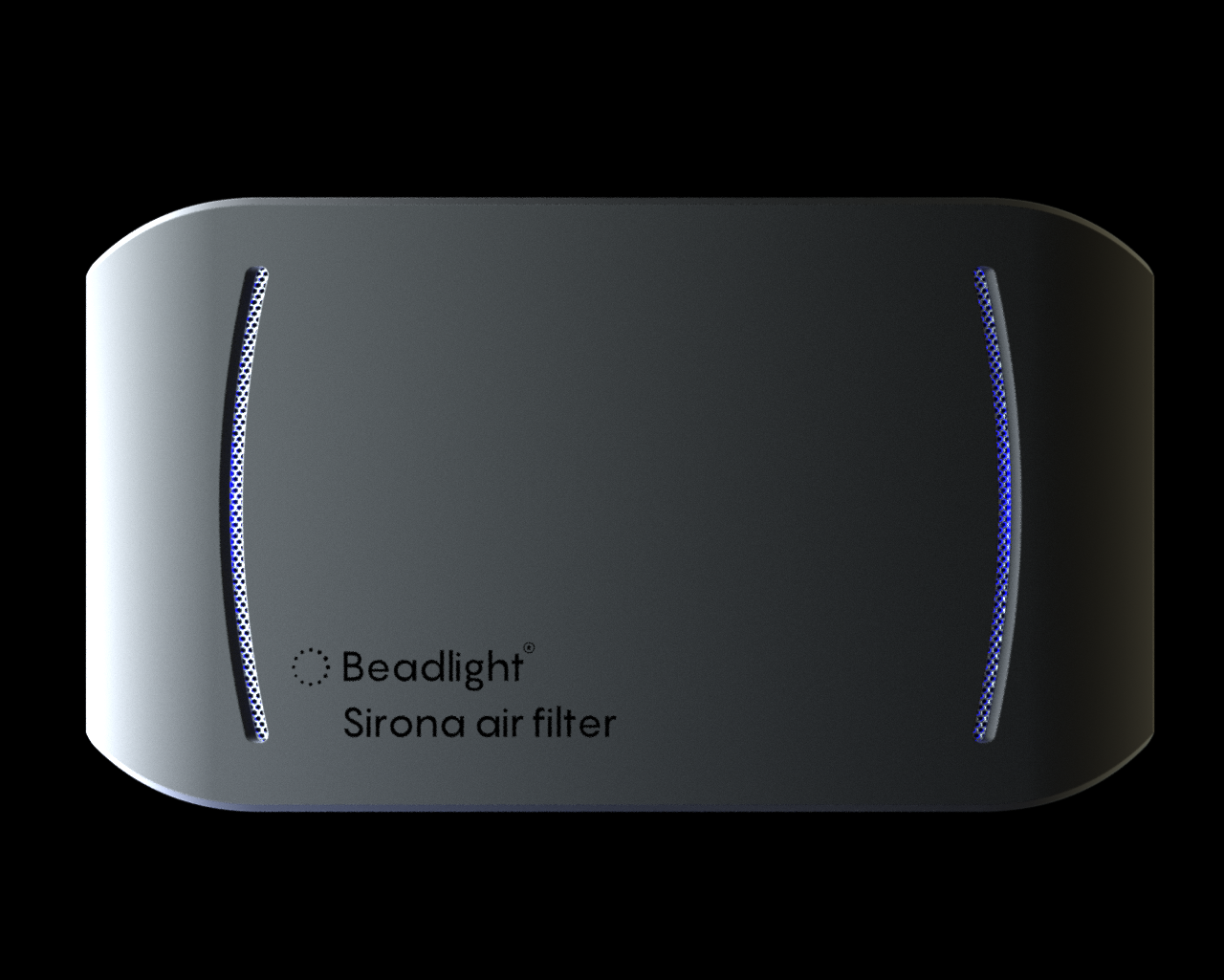
Beadlight has also created Spinnaker, an ultra-thin OLED panel that creates a large, diffused light window of light that helps generate a warm ambience within the seat environment. The base houses a capacitive switch with varying brightness levels, and CANBus control is enabled so that all lights can be centrally controlled in the cabin when needed.
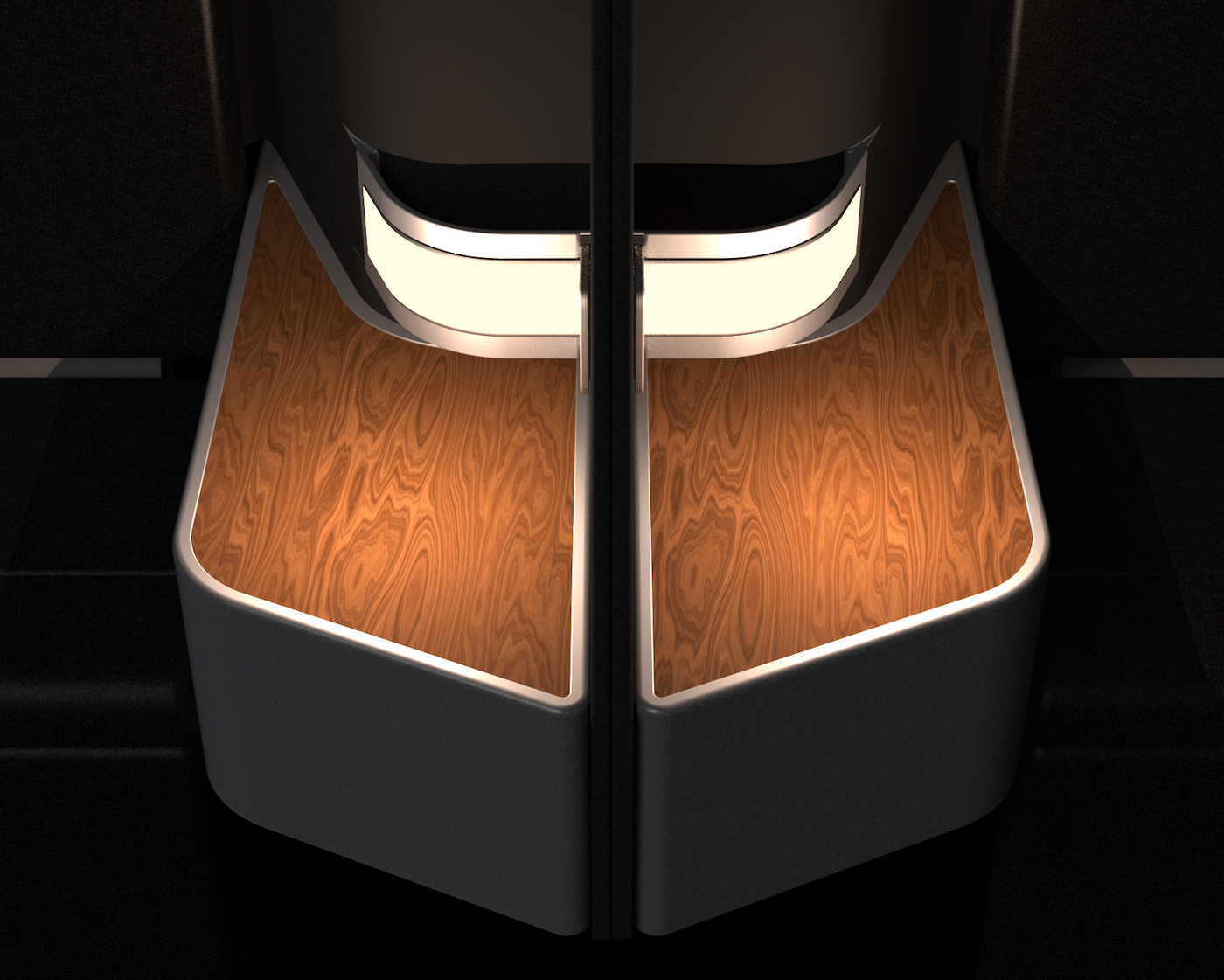
The first glass reading light
Another interesting launch is the Jade reading light, claimed by Schott to be the first aviation light ever made from glass. The innovative light was designed with PriestmanGoode, with an integrated ambient light halo featuring a sleek full glass cover that is as intuitive to use as a smartphone. Thanks to capacitive touch technology, swiping allows passengers to adjust light position and brightness to create their own illumination experience.
The homogeneous tempered safety glass cover is robust, scratch-resistant and shatterproof, and does away with technical components such as joints, arms and angles. Instead of relying on bulky optical lenses for light transport, this product powers thin fibre-optic light guides with white LEDs, and thanks to the spatial separation of LED and light guides as well as the flexibility of fibre optics, Jade has a mere 0.5in installation depth, allowing for good integration into a seat and easy front installation and deinstallation.

Available in landscape and portrait format, the light can be printed with any décor, such as standard or metallic RAL colours, to imitations of stone, fabric or ornaments, or even 3D effects. Jade can also be certified for all relevant aviation and OEM requirements.
The light is shortlisted for the Crystal Cabin Awards 2020.


